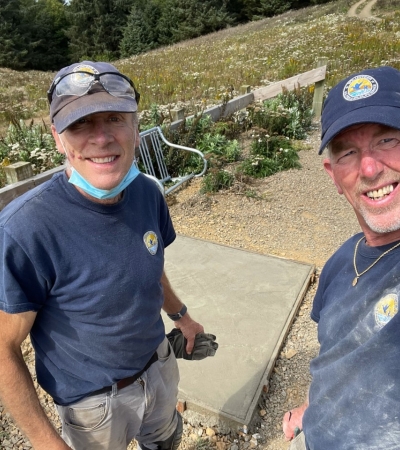Facility
Location
37 Miles North on Highway 372
Green River, WY 82935
United States
Volunteer Position Overview
About This Position
Position:
Seedskadee National Wildlife Refuge is recruiting two hosts to staff our Visitor Center for the summer of 2025. Hosts will be responsible for staffing the Refuge's Visitor Center Monday through Friday of each week.
Duties:
- Greet the traveling public and share information about the Refuge.
- Interpretation of management activities as well as public use opportunities/regulations.
- Maintain information kiosks on Seedskadee NWR.
- Clean one public restroom adjacent to the visitor center.
Hosts must provide their own RV for lodging.
The Refuge has camper pads available with sewer and water. Propane is provided.
Please contact Ross Flagen via email with questions - Ross_Flagen@fws.gov
About The Refuge:
The name Seedskadee originated from local tribes' word "Sisk-a-dee-agie" meaning "river of the prairie hen." The 26,210 acre Refuge protects a mosaic of riparian , wetland, and upland shrub habitats along 36 miles of the Green River in southwest Wyoming. The riparian corridor of the Green River is an important migration route and nesting area for a wide variety of migratory waterfowl and passerine bird species. Many insects, big game and small mammals can be found on the Refuge as well as resident and migratory birds. Refuge lands are also rich in historic and cultural resources. The area was used by nomadic Indian tribes, fur trappers, and early pioneers. Thousands of pioneers crossed the treacherous Green River on what is now Seedskadee National Wildlife Refuge. The Oregon, Mormon, and California Trails, as well as the Pony Express Route, which all cross the refuge, have been designated as National Historic Trails by Congress. Jim Bridger and others operated ferries on the Green In the 1840's and 1850's. Diaries of immigrants often mention the crossing on the river and its difficulties. Ferries were swept away by the strong currents and lives and possessions were lost. To this day, some of the trails can be traced across the Refuge by their ruts.
Seedskadee is a unique and important component of the National Wildlife Refuge System (System) which includes more than 565 refuges totaling over 93 million acres across the United States. Seedskadee National Wildlife Refuge was established in 1965 through the Colorado River Storage Project Act of 1956. Section 8 of this Act provided for the establishment of wildlife habitat development areas to offset the loss of wildlife habitat resulting from reservoir development in the Colorado River Drainage. The Seedskadee Reclamation Act of 1958 specifically authorized acquisition of lands for Seedskadee National Wildlife Refuge.
Stories About Volunteering
Other Ways to Work with Us
Are you looking for something different than a volunteer opportunity? The Fish and Wildlife Service employs around 9,000 people nationwide and offers great internship opportunities every year.







